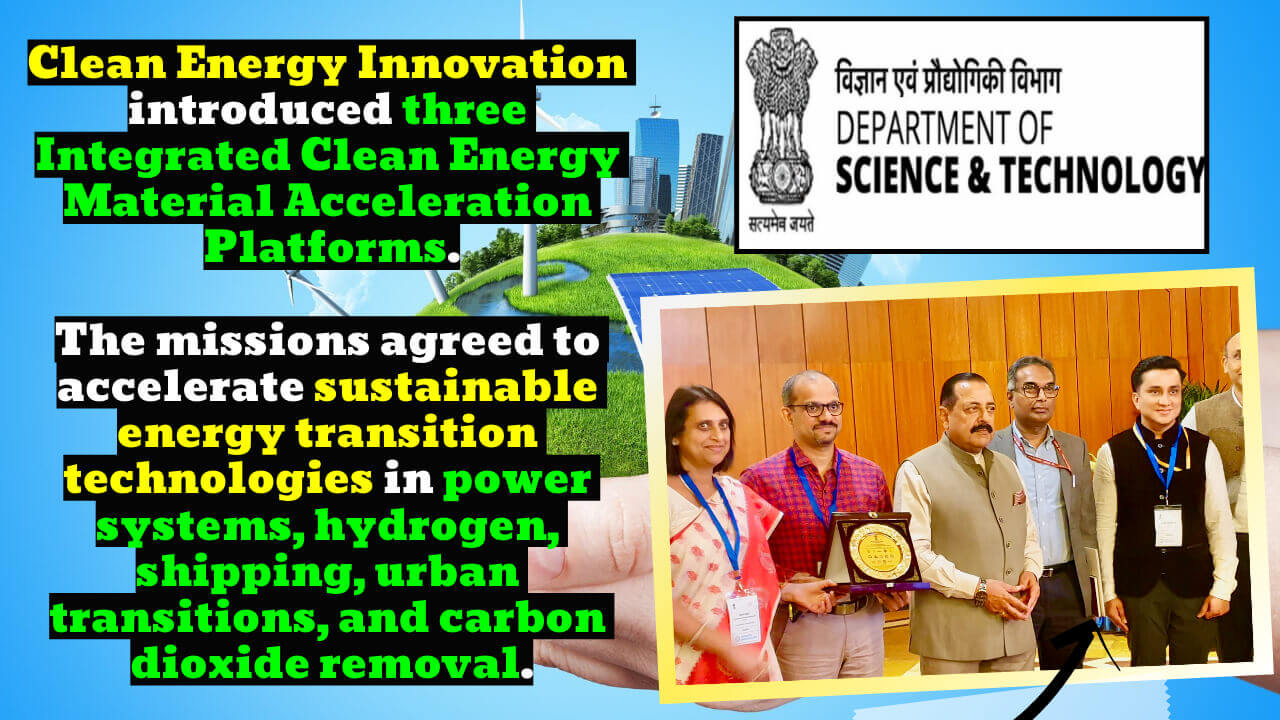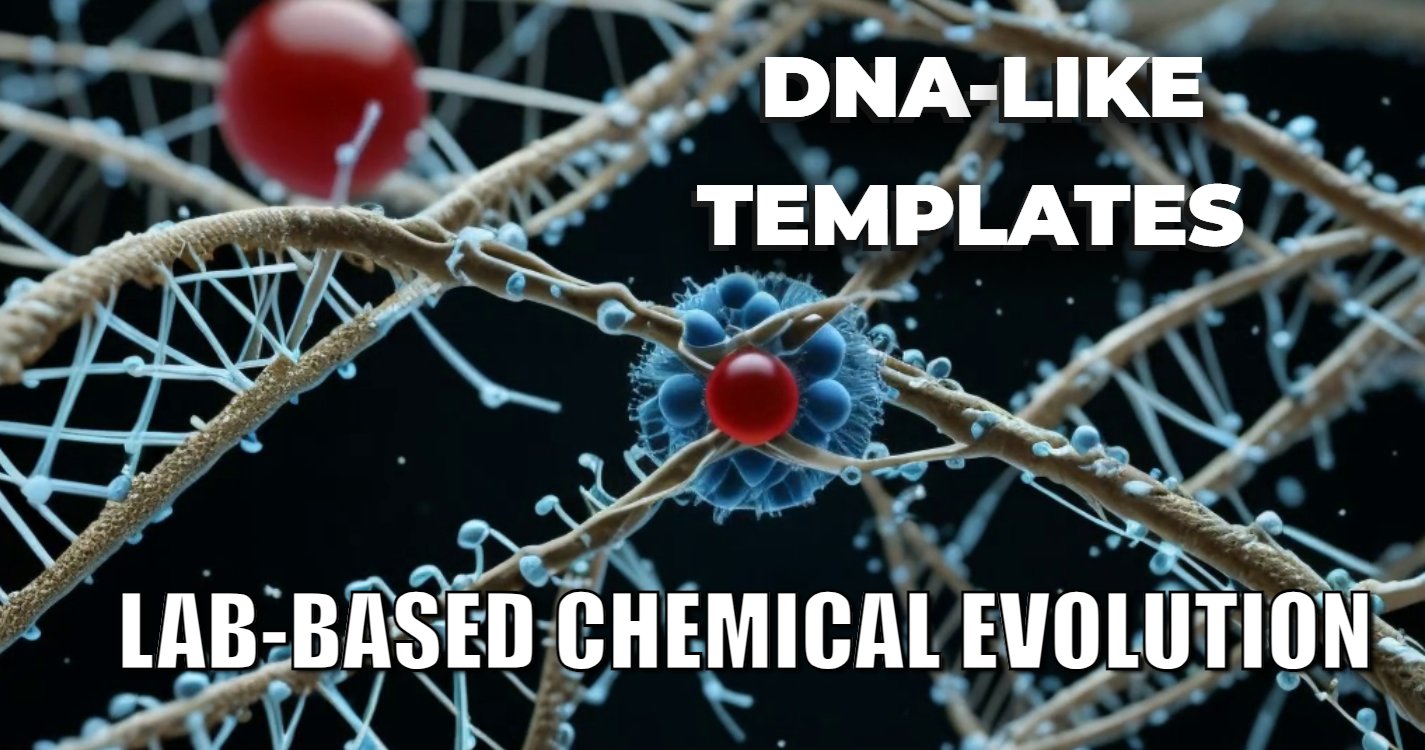Jitendra Singh, the Minister of Science and Technology, gave the awards to the three people who run the Clean Energy Materials Acceleration Platforms.
The platforms are part of a knowledge network that includes more than 38 elite institutions and more than 80 researchers working on new low-cost advanced energy materials. There have been five of the seven Missions that were planned to start in the last year. They work on power systems, hydrogen and shipping. They also work on urban transitions and removing carbon dioxide. DST-IISER Thiruvananthapuram is an Integrated Clean Energy Material Acceleration Platform for Bioenergy and Hydrogen based in India.
Key Highlight:
- Three Integrated Clean Energy Material Acceleration Platforms were unveiled at the MI Annual Gathering on April 4, 2022.
- DST has pledged to help build three clean hydrogen valleys in India by 2030.
- On behalf of building a network of top clean energy innovation professionals, the Mission Innovation Annual Gathering examined, discussed, and set MI’s strategy and work plan.
- Following the launch of MI 2.0 in June 2021, this event was an important opportunity to agree on activities needed in the decade of global clean energy innovation.
- The missions agreed to accelerate technology for clean energy transitions in power systems, hydrogen, shipping, urban transformations, and carbon dioxide removal.
- DST has put up three Integrated Clean Energy Material Acceleration Platforms:
- DST-IISER Trivandrum Integrated Clean Energy Material Acceleration Platform on Storage: A consortium of 14 R&D institutes led by IISER Thiruvananthapuram aims to automate the development of Solid-State Battery technology.
Three integrated clean energy material acceleration platforms were launched at the MI Annual Gathering session in 2022, where new energy collaborations were made public, on April 4 2019.
Minister of Science and Technology Dr. Jitendra Singh gave the awards to three people who led the Clean Energy Material Acceleration Platforms at three different universities.
They are called Material Acceleration Platforms, set up by the Department of Science and Technology (DST). They will use new technologies like next-generation computing, artificial intelligence (AI) and machine learning (ML), and robotics to speed up finding new materials by up to 10 times. More than 38 elite institutions and more than 80 researchers are working on next-generation low-cost advanced energy materials through the platforms.
When he was speaking, Dr. Singh also talked about the Hydrogen Valley Platform, which he said was a global project that aims to use hydrogen on-site to make it more efficient, use renewable resources effectively, and identify water surplus areas with their names. The H2 Valleys goals will be met through groups of clean hydrogen valleys that combine the entire hydrogen value chain (production, storage, and transportation) to reach critical scale and unlock learning curve effects. By 2030, DST wants to help India get three clean hydrogen valleys.
People who work for the Mission Innovation (MI) group met for their annual meeting to talk about the group’s strategy and work plan. They also talked about national priorities so that they could build a network of senior clean energy innovation leaders.
Throughout the three-day program, senior clean energy innovation leaders made progress on MI’s strategic goals for 2022 and other projects.
Mission Innovation brings together governments from all over the world, international organizations, and private sector investors worldwide to lead the global investment and collaboration needed to make clean energy technology more affordable and accessible around the world. This is called a “tipping point.”
MI wants to show how governments can work together to speed up innovation and help with the “Year of Implementation,” which is what it’s all about. Another goal for MI is to keep MI as the world’s top clean energy innovation forum. This includes maximizing long-term impact through partnerships and capacity building and keeping MI that way.
Following the launch of a new phase of the MI initiative in June 2021, called MI 2.0, this meeting was a great chance to agree on what to do in the next decade of global clean energy development. There have been five of the seven Missions that were planned to start in the past year. The goal of the missions was to speed up technologies that would make it easier for people to use clean energy. They focused on power systems, hydrogen, shipping, urban transitions, and carbon dioxide removal. When the MI Missions are combined with future ones, they could help 52 percent of the world’s current emissions get off the ground at a low cost.
They have set up three Integrated Clean Energy Material Acceleration Platforms, like this one.
The DST-IISER is in Thiruvananthapuram, in the state of Tamil Nadu. On Storage: An Integrated Clean Energy Material Acceleration Platform The consortium of 14 research institutes set up at IISER Thiruvananthapuram wants to speed up the development of Solid-State Battery technology using Machine Learning Artificial Intelligence in automated processes to make it easier for people to work on it. The center would use its expertise and knowledge to help with solid-state battery research.
In the DST-IIT Hyderabad Integrated Clean Energy Material Acceleration Platform on Bioenergy and Hydrogen, the goal is to develop ultra-efficient commercially available biomass and waste-water to hydrogen conversion and storage systems by discovering new catalysts, new storage systems, and new and more efficient plant designs. A team of scientists from nine different partnering institutions will work together during the project.
The DST-IIT Kanpur Integrated Clean Energy Materials Acceleration Platform: This group of people works together to make materials that use less energy. Using quantum and classical mechanics-enabled atomistic simulations and AI and ML algorithms, this platform aims to help people design materials that can be used to harvest energy. The group of researchers who use the platform comprises scientists from 13 top universities.




